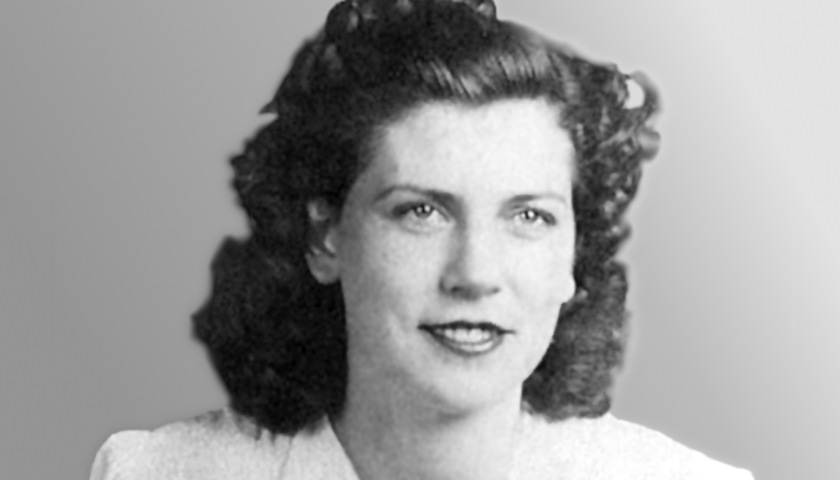Margaret E. Knight, born in York, Maine in 1838, preferred a “jack-knife, a gimlet, and pieces of wood” to dolls as a young girl. Her amateur woodworking skills made her sleds the “envy of the town’s boys” while her kites were famous throughout the community, according to Henry Petroski’s account of the young inventor in The American Scholar.
But the abrupt death of her father put her childhood to an early end. Her widowed mother moved the family to Manchester, New Hampshire, where Knight began working in a cotton mill at the age of 12 along with her brothers.
Despite the unfortunate circumstances, it was an experience in the cotton mill that inspired one of Knight’s earliest inventions. Working from dawn to dusk to help support her impoverished mother, Knight witnessed an injury on the factory floor one day caused by a steel-tipped flying shuttle launching out of a mechanical loom. Mary Sisson recounts the experience in volume four of Inventors and Inventions.
“The shuttles, which carried thread, were used to weave fabric and were thrown through the cross threads by a mechanism in the loom. Occasionally the thread tied to the shuttle would snap, and the shuttle, no longer tethered to the loom, would fly out of the loom at great speed. The shuttles had sharp metal points, and in the accident Knight witnessed, a shuttle flew out and stabbed a mill worker, causing a serious injury,” Sisson writes.
Within a few weeks of the accident, Knight had invented a loom safety device that was widely used by mills throughout Manchester, but she was still unfamiliar with the patenting process because of her young age. The exact nature of the device isn’t settled history, but Sisson suggests that it was either a “guard to physically prevent the shuttle from flying off the loom” or a mechanism to “automatically stop the loom if the shuttle thread broke.”
Health complications forced Knight to quit her work in the cotton mills and she spent her late teens and early 20s working a variety of odd jobs that introduced her to upholstering, engraving, home repair, and early photography processes.
The flat-bottomed paper bag

After the conclusion of the Civil War, Knight moved to Springfield, Massachusetts, where she took a job in 1867 with the Columbia Paper Bag Company. Knight became preoccupied with designing a machine that could produce flat-bottomed paper bags, which workers had to create by hand. Flat-bottomed paper bags could hold more, but were more expensive to use because of the lack of a mechanical process.
Most shoppers used cloth sacks, crates, or boxes to carry their goods. By 1869, Knight had a machine that could “feed, cut, and fold the paper automatically and, most important, form the squared bottom of the bag,” Petroski writes. So she applied for a patent on her invention, but was surprised to learn that the idea was already taken.
Charles Annan, a frequent visitor of a machinist’s shop in Boston where Knight was building a prototype of her machine, attempted to steal the patent for the invention, but Knight took him to court for patent inference in 1870 and won her case.

Annan argued that Knight “could not possibly understand the mechanical complexities of the machine,” but her journals, drawings, and models, along with witness testimony from her employers, convinced the court otherwise.
“I have from my earliest recollection been connected in some way with machinery … I have worked at almost everything where machinery is employed,” Knight said during the court battle.
Records of Knight’s early patents are maintained by the Smithsonian’s National Museum of American History, where an early model of her machine is on display.
Lady Edison
After securing her patent, Knight founded the Eastern Paper Bag Company in Hartford, Connecticut with a businessman from Massachusetts. Under the agreement she received $2,500 upfront, plus company stock and royalties in exchange for use of the patent. She wasn’t a businesswoman and had no interest in the day-to-day management of the company.
Instead, she continued to improve on her invention, filing several more patents for upgrades to her paper-bag machine. She was now a full-time inventor, and held 30 patents by the end of her life, though historians suggest that she invented dozens of other devices that she didn’t patent.
Other patents included a machine for cutting shoe-soles and improvements to the rotary engine but her most influential invention remained the paper-bag machine. In fact, in 1871 she was decorated by Queen Victoria for her invention.
A 1913 New York Times article on “Women Who Are Inventors” profiled the elderly Knight who was said to be “working twenty hours a day on her eighty-ninth invention.” Like many female inventors of the time, she was often called a “Lady Edison,” but she differed from her peers by not concealing the fact that she was a woman.

Petroski notes that most female inventors of the time would only write their initials on patent applications, but Knight used her full name on her very first patent. Her success in the predominately-male field of machinery was instrumental for the early stages of the women’s suffrage movement.
– – –
Anthony Gockowski is managing editor of Battleground State News, The Ohio Star, and The Minnesota Sun. Follow Anthony on Twitter. Email tips to [email protected].





